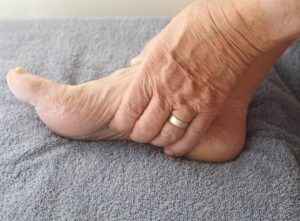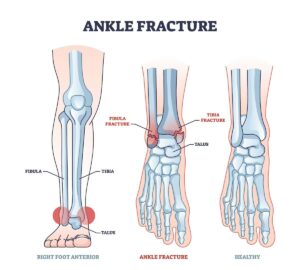Free download: Top 10 Natural & Easy Remedies for Joint Pain from Home. Learn these helpful remedies.
Estimated Reading Time: 9 minutes read
Charcot foot, a serious condition often associated with diabetes, can lead to significant complications in foot and ankle health. It involves weakening of the bones in the foot, which can lead to injuries and deformities. This guide focuses on exercises and care tips specifically tailored for those managing Charcot foot, emphasizing the importance of gentle strengthening and stretching for maintaining foot and ankle health.
For individuals with Charcot foot, it’s crucial to engage in exercises that improve stability and support for the foot and ankle joints. These exercises, along with proper stretching routines, can enhance flexibility and reduce the risk of further complications such as ulcers or deformities.
Table of Contents
Causes and Risk Factors for Charcot Foot
Understanding the causes and risk factors of Charcot foot is essential for effective management:
- Neuropathy: Often associated with diabetes, causing a loss of sensation in the foot.
- Inadequate Footwear: Shoes that do not provide proper support can exacerbate the condition.
- Uncontrolled Diabetes: Poor blood sugar control increases the risk of developing Charcot foot.
- Previous Foot Injuries: Even minor injuries can worsen when sensation is reduced.
- Obesity: Excess weight can put additional strain on weakened feet.
- Other Medical Conditions: Conditions that affect blood flow or bone health can contribute to Charcot foot development.
Each of these factors underscores the importance of careful management and prevention strategies.
Recognizing Symptoms of Charcot Foot
Early detection of Charcot foot symptoms is crucial for preventing severe complications:
- Swelling: Often without a history of injury.
- Redness: The foot may appear redder than usual.
- Increased Warmth: The affected foot feels warmer compared to the other foot.
- Pain or Discomfort: Especially in cases where neuropathy is not present.
- Deformities: Change in the shape of the foot over time.
- Instability: Difficulty in walking due to the weakened bones and joints.
Prompt attention to these symptoms can lead to early intervention and better management.
Gentle Strengthening Exercises for Charcot Foot
For individuals with Charcot foot, gentle strengthening exercises are key. These exercises should be done with caution and preferably under the guidance of a healthcare professional.
1. Isometric Ankle Dorsiflexion
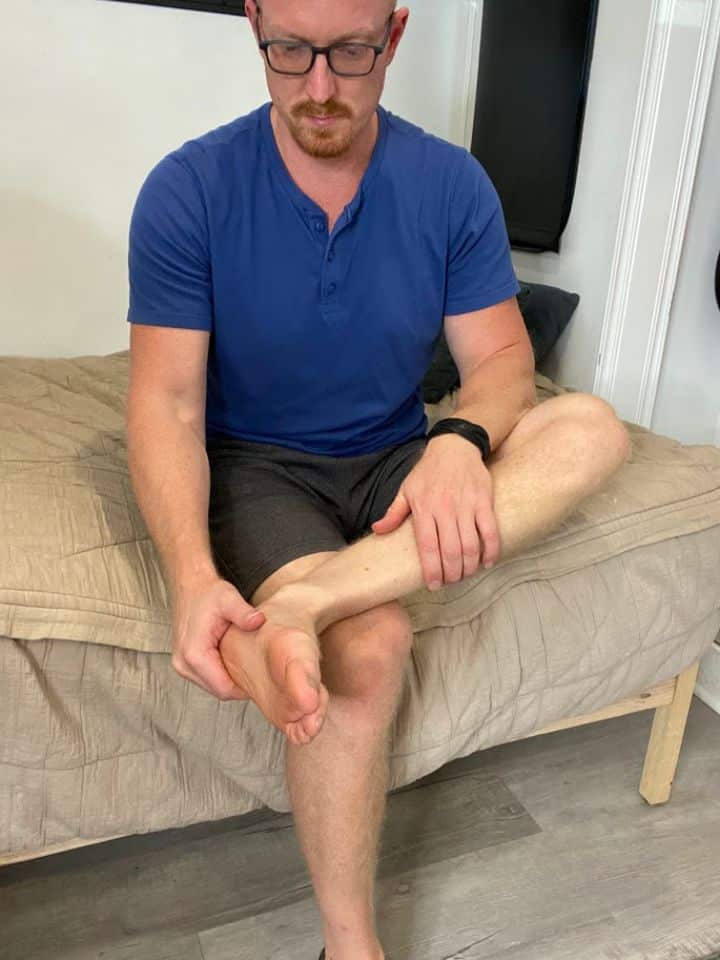
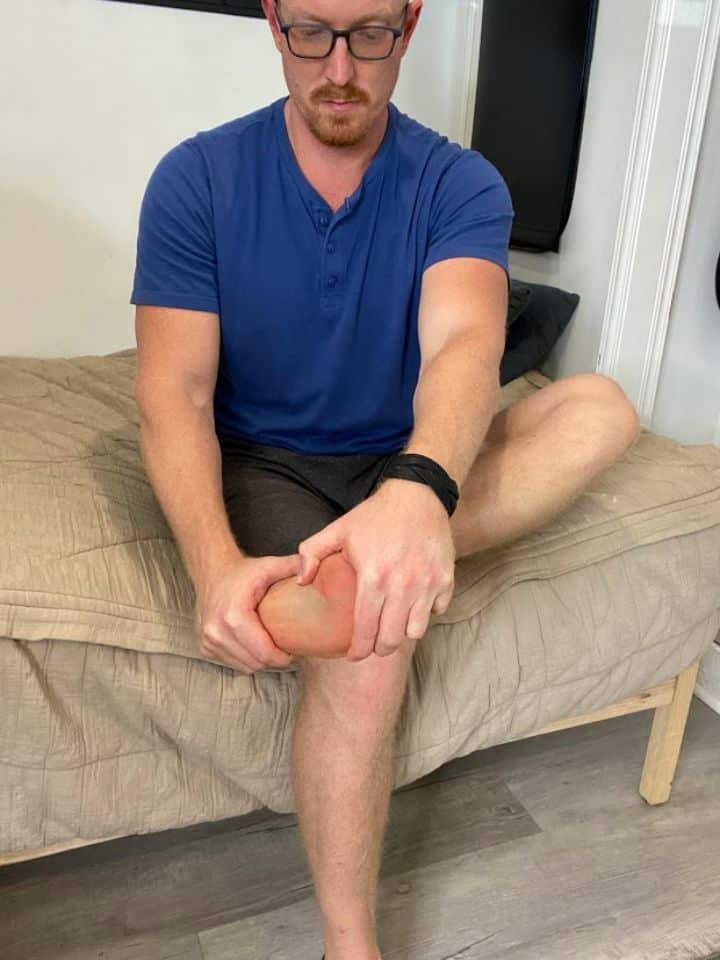
- Place one hand on the bottom of the foot, positioned over the ball of foot.
- Gently, pull the foot back into dorsiflexion until a gentle stretch is felt on the back side of the heel and ankle.
- If the stretch is very intense at first, try holding for 5 seconds, then rest. Repeat 10x.
- If the stretch is only mild, then try a longer hold time anywhere from 30-60 seconds.
2. Isometric Ankle Plantarflexion
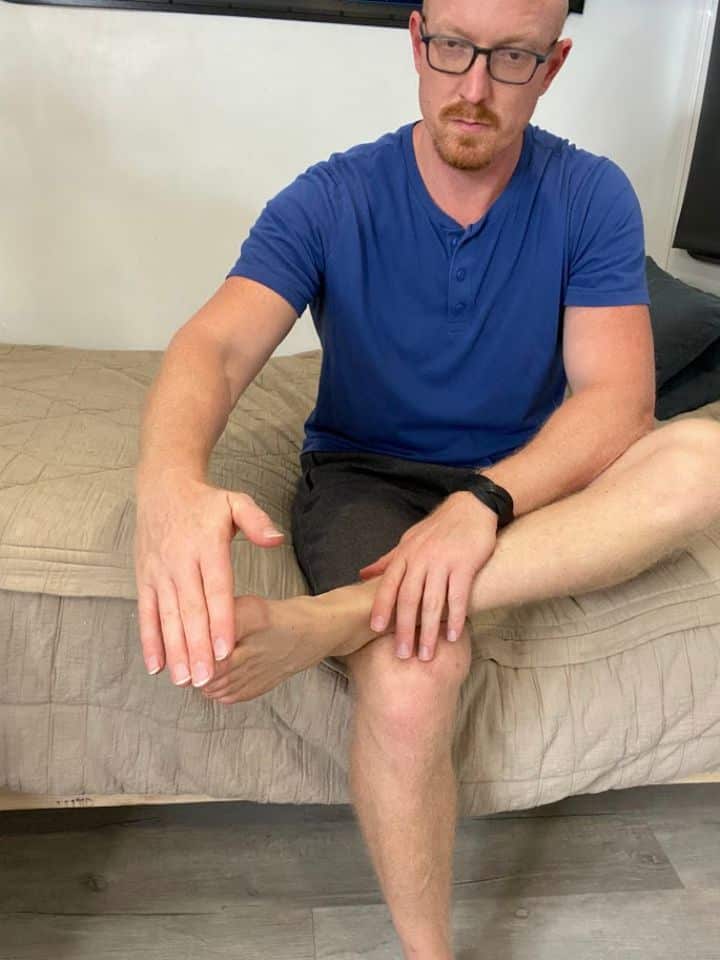
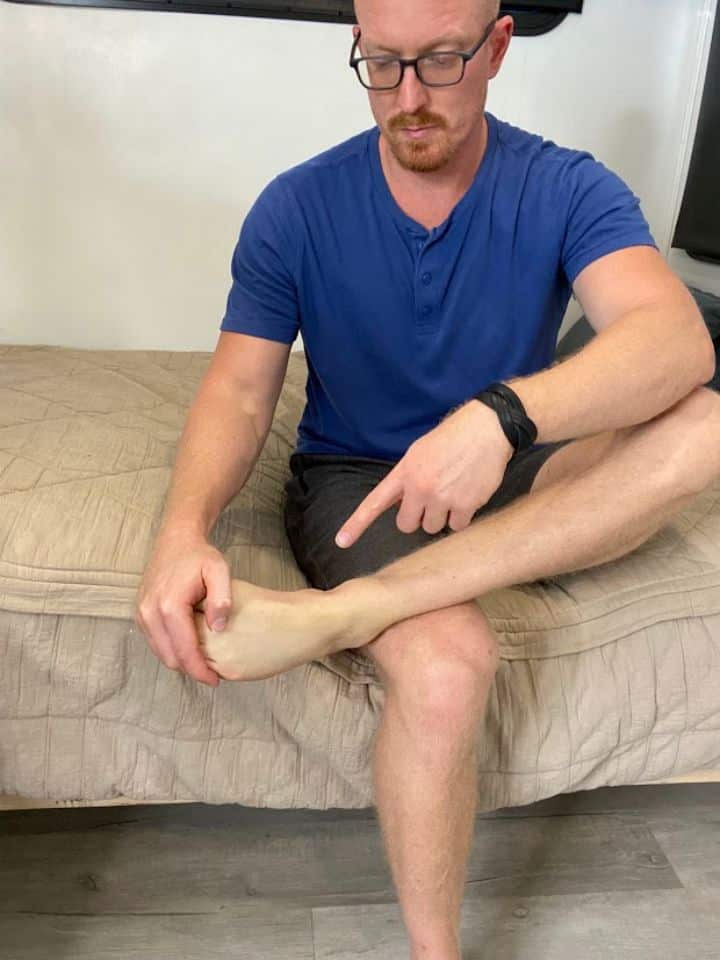
- Place one hand on the top of the foot, positioned on the forefoot near the toes.
- Gently, pull the foot down into plantar flexion until a gentle stretch is felt on the front side of the foot and ankle.
- If the stretch is very intense at first, try holding for 5 seconds, then rest. Repeat 10x.
- If the stretch is only mild, then try a longer hold time anywhere from 30-60 seconds.
3. Isometric Ankle Inversion
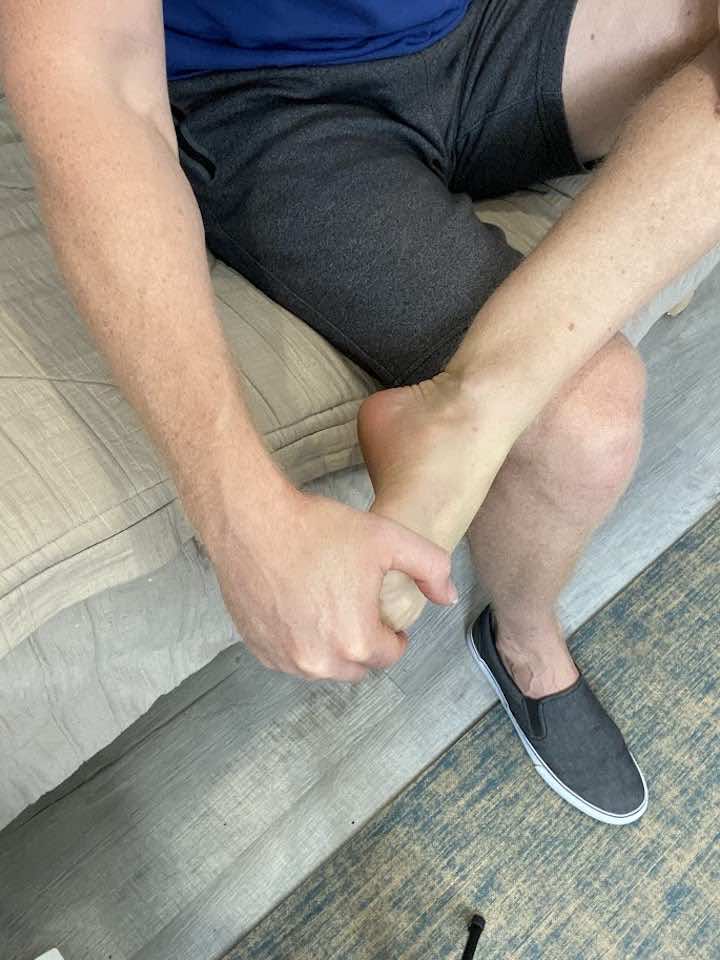
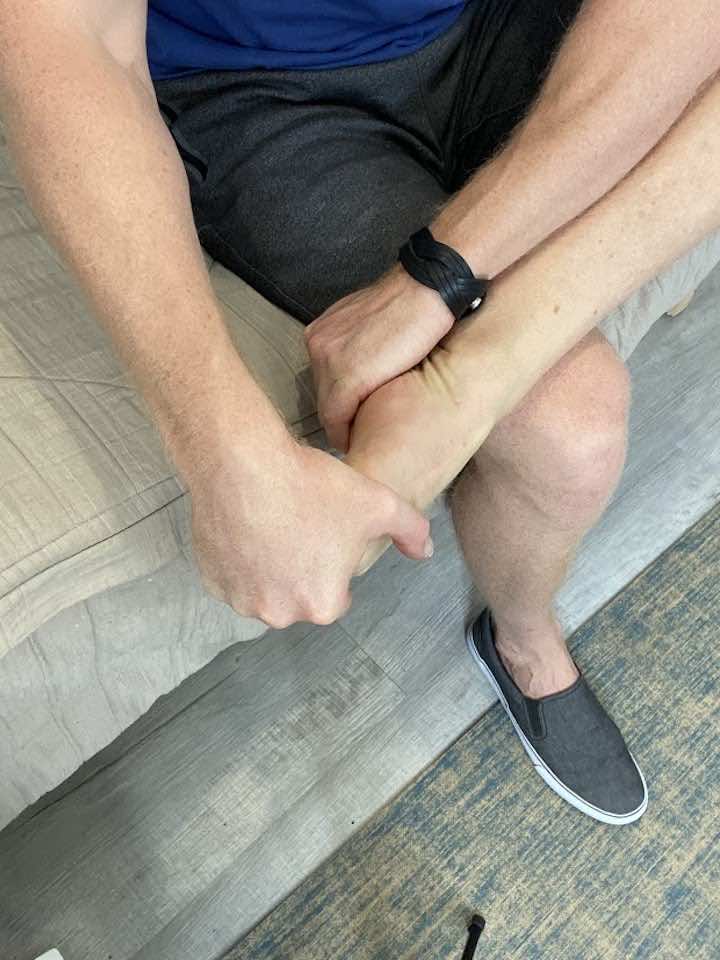
- Place one hand on the top of the foot, positioned on the forefoot near the toes.
- Gently pull the foot and ankle into a plantar flexion stretch, then pull slightly inward to pull the foot towards you.
- If the stretch is very intense at first, try holding for 5 seconds, then rest. Repeat 10x.
- If the stretch is mild, try a longer hold time, anywhere from 30-60 seconds.
- Repeat this exercise two more times for a total of three repetitions.
4. Isometric Ankle Eversion
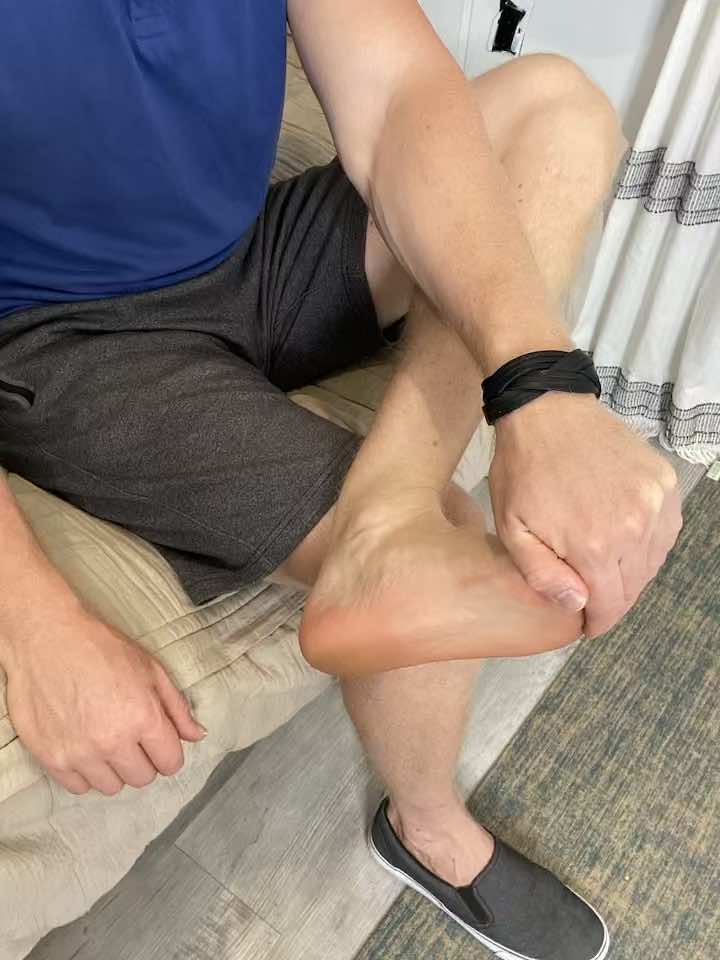
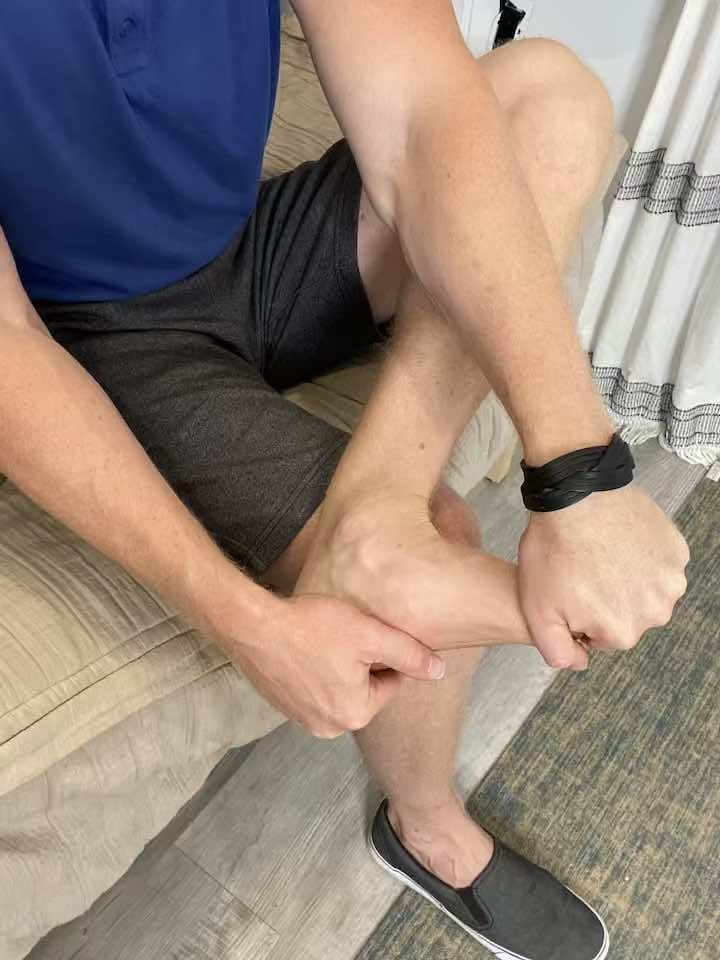
- Place one hand on the bottom of the foot, over the ball of the foot.
- Gently pull the foot and ankle back into dorsiflexion, then pull slightly outward, so the foot moves away from you.
- If the stretch is very intense at first, try holding for 5 seconds, then rest. Repeat 10x.
- If the stretch is mild, try a longer hold time, anywhere from 30-60 seconds.
- Repeat this exercise two more times for a total of three repetitions.
These exercises help build stability without putting undue stress on the fragile bones.
Stretching for Flexibility with Charcot Foot
Stretching exercises are vital for maintaining flexibility and preventing stiffness, which is crucial for Charcot foot management.
1. Gentle Plantar Fascia Stretch

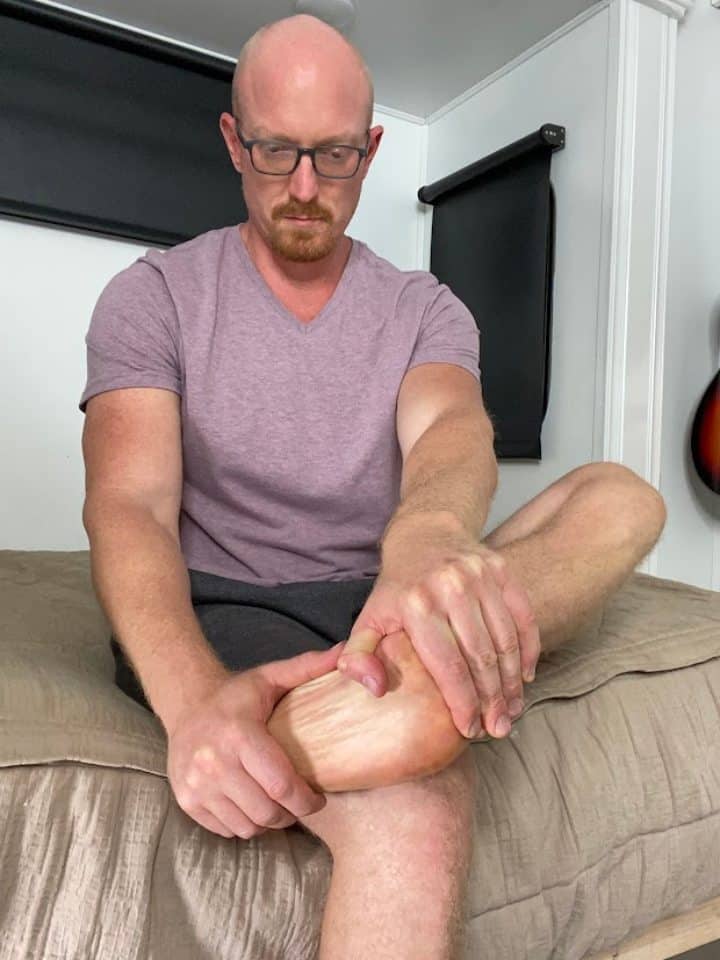
- Starting position: Sitting in a chair with the leg to be stretched either in front of you on the floor or crossed over the opposite leg (like a Figure 4).
- Place one or both hands on the plantar surface of the foot, over the ball of foot and toes, and give a gentle pull back until you feel a stretch.
- Hold for at least 30 seconds and complete 3 sets.
- Repeat on the other leg.
2. Calf Stretch
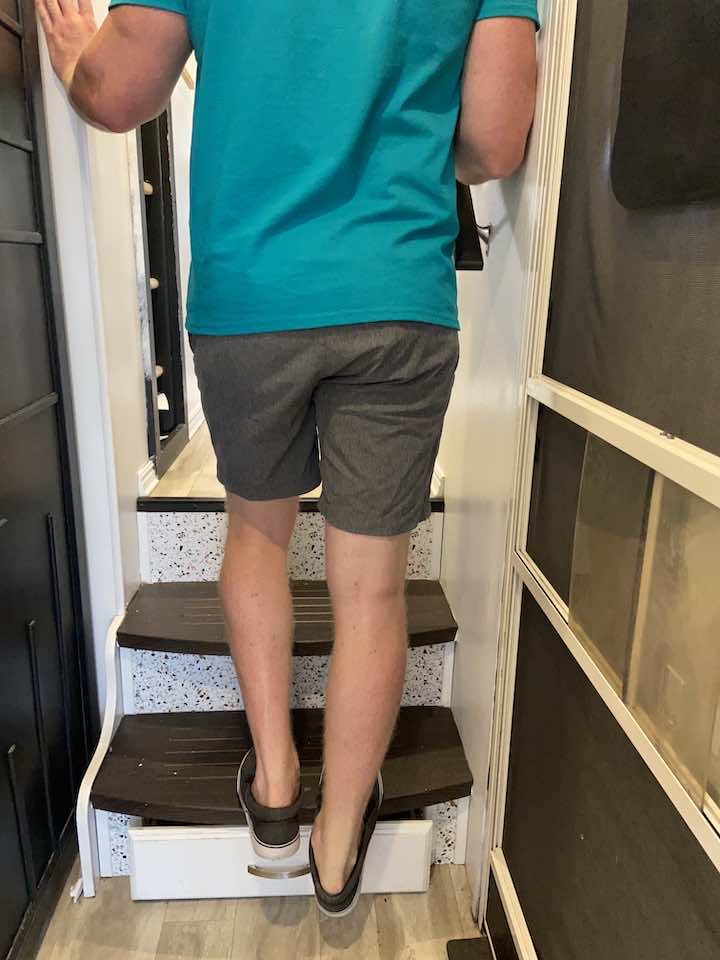
- While holding onto the railing of a staircase, step both feet up.
- Slightly stagger your feet so that the injured heel is hanging off the step.
- Your front leg should bend slightly, while the back (injured) leg’s knee will be straight.
- Hold this stretch for 30 seconds before relaxing.
- Repeat the stretch two more times for a total of three sets.
3. Soft Tissue Mobilization
- Sit comfortably in a chair and place a golf ball under the foot experiencing pain.
- Roll the golf ball under your foot, searching for areas of tenderness and providing a massage to the tight plantar fascia tissue.
- Perform 10 rolling repetitions in each set.
- Complete a total of 3 sets of this exercise.
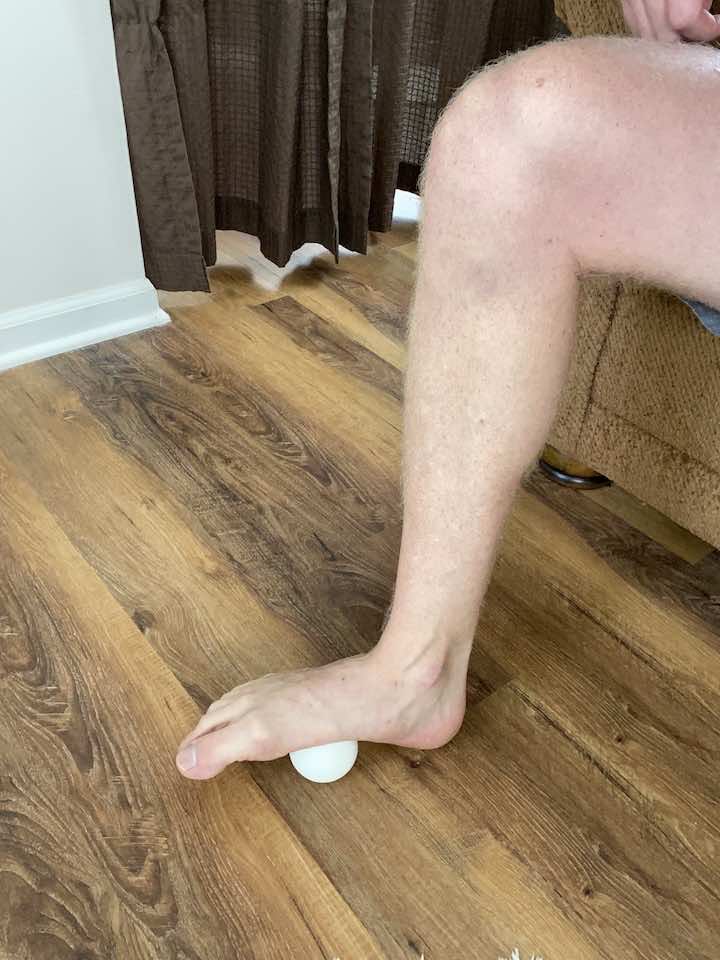
Including these stretches in daily routines can improve foot and ankle mobility, reducing the risk of further injury.
Advanced Strengthening Exercises
Once your ankle starts feeling better, you can progress to more challenging exercises. These will help strengthen and stabilize your ankle, preventing future injuries.
1. Marble Pick-Ups
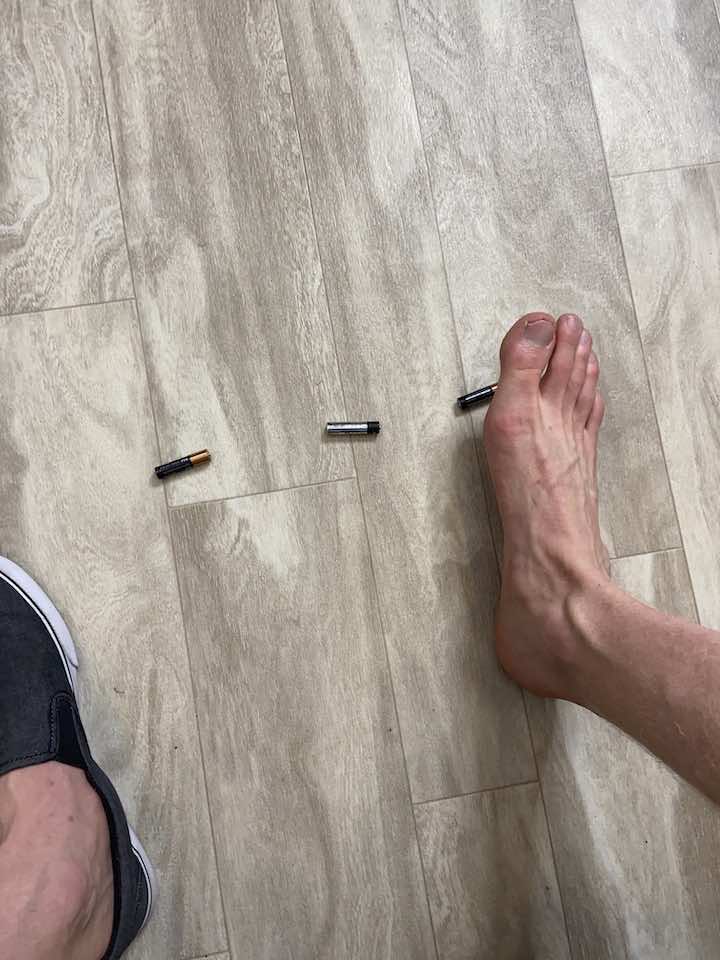
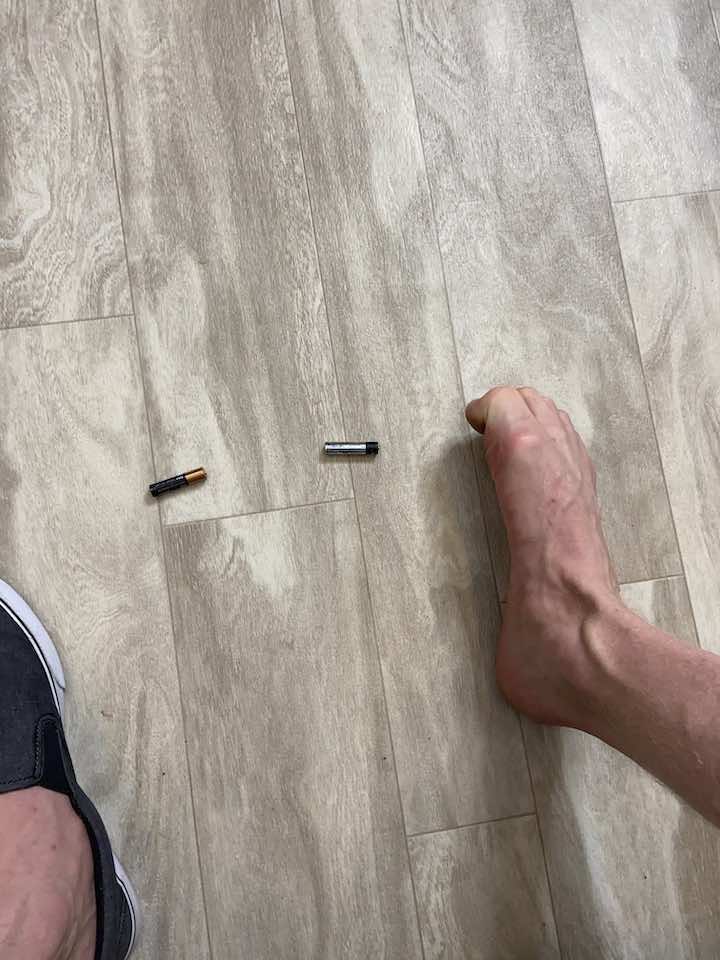
- Get 10-20 marbles and place them on the floor with a cup next to your pile of marbles.
- Stand up and hold onto a steady surface like a counter to help with balance.
- Then in standing, grab a marble with your toes and lift it into the cup. Picking up marbles can be challenging, but the great thing is that even just trying to pick up the marble will strengthen your foot!
2. Arch Doming
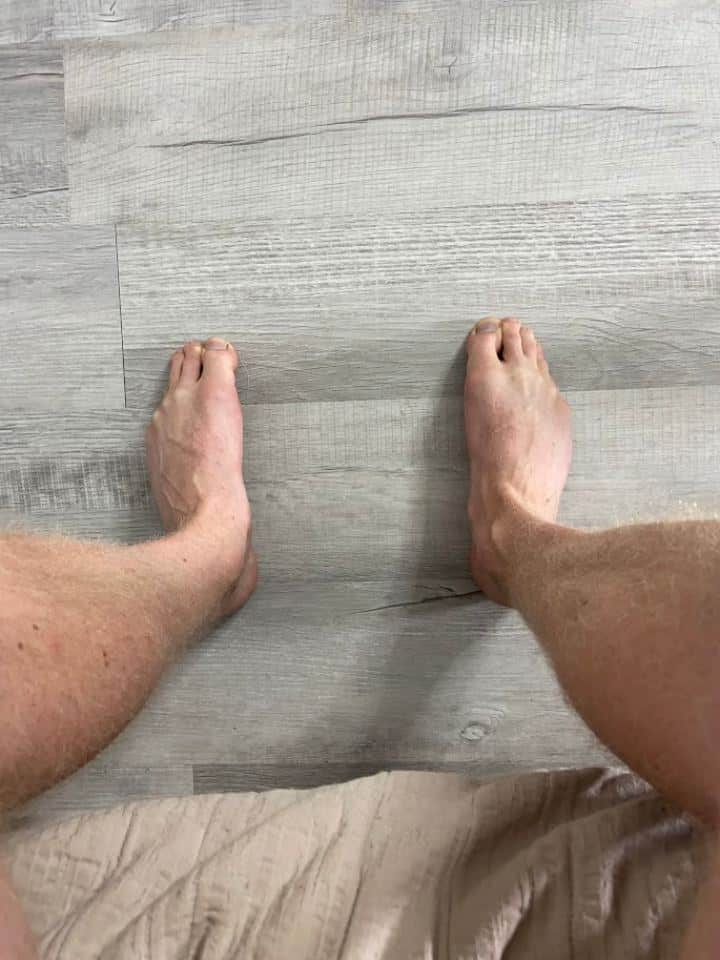
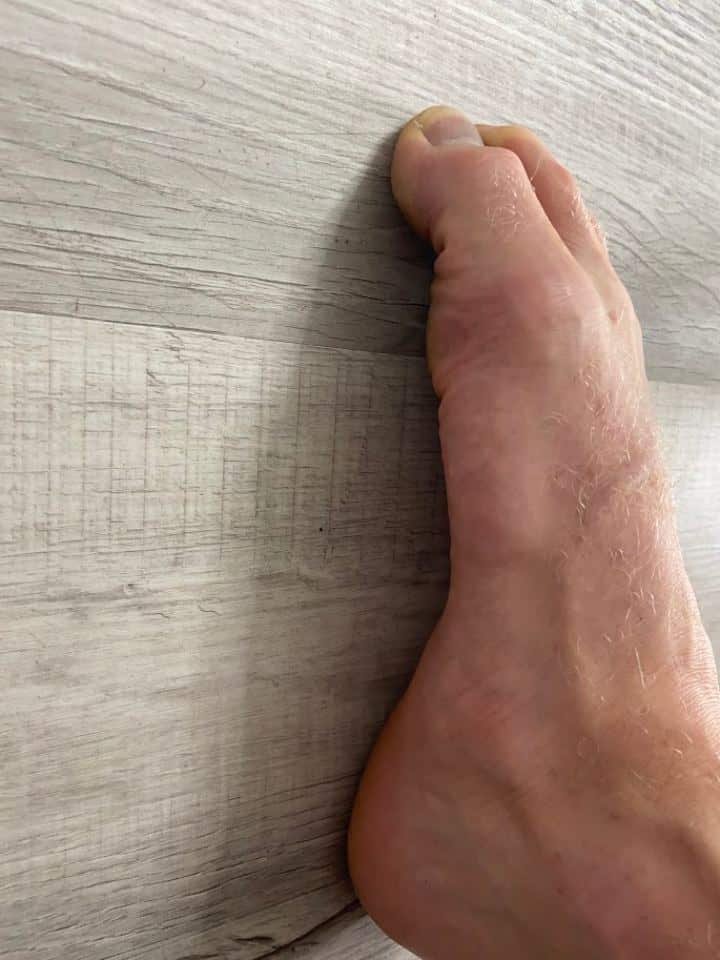
- Starting position: Seated in a chair with the fleet flat on the floor. Shoes should be removed.
- You can practice with both feet at the same time or one foot at a time.
- Squeeze the bottom of the foot and lift the inner arch off the floor, without moving any other part of the foot.
- Hold this lift for 2 seconds, then slowly allow the arches to relax back down to the floor.
- Repeat 10 repetitions for 3 sets.
3. Ankle Eversion with Resistance Band
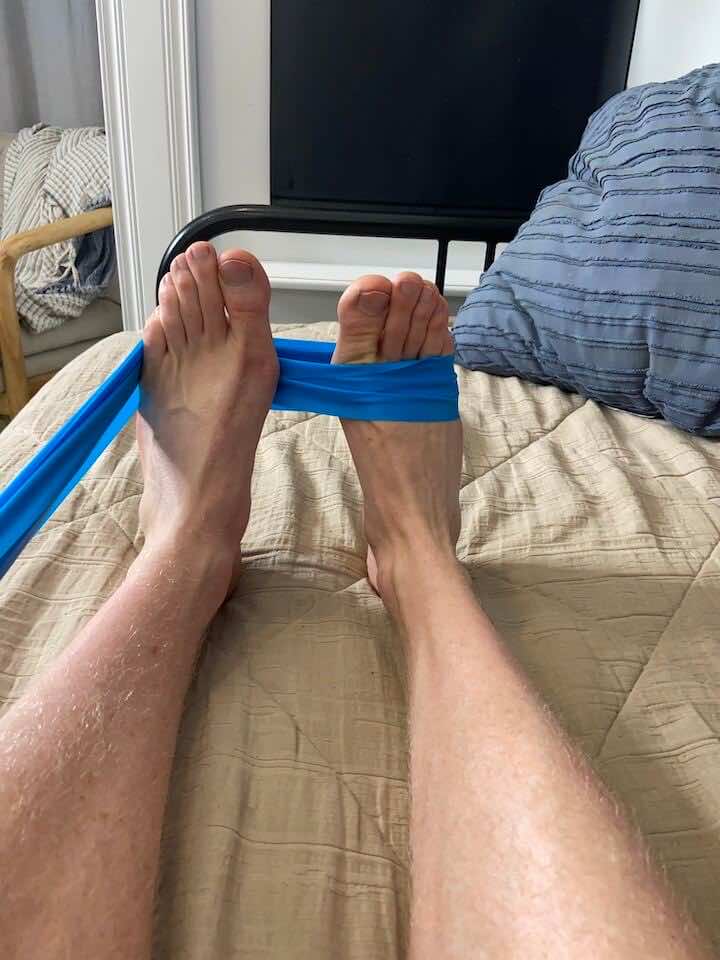
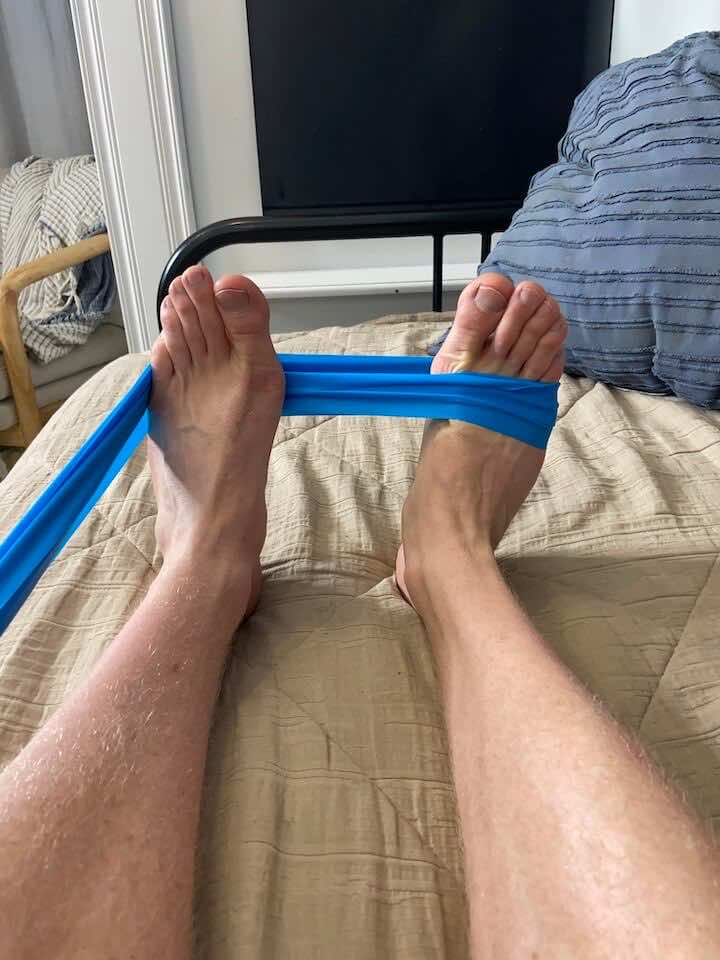
- Lay down on your bed with your ankle off the end.
- Loop the band around your right foot and around your left, as seen in the graphic. We’re going to use your left foot as an anchor for your right foot as your exercise.
- Bring your right foot out like you’re angling your ankle away from your left foot, squeeze in, then relax.
- Do this for 10 repetitions and complete 3 sets in total.
Tip: Work on just moving your ankle and not your entire leg when performing this exercise! See if your knee rolls out at all; try to keep it still.
4. Ankle Inversion with Resistance Band
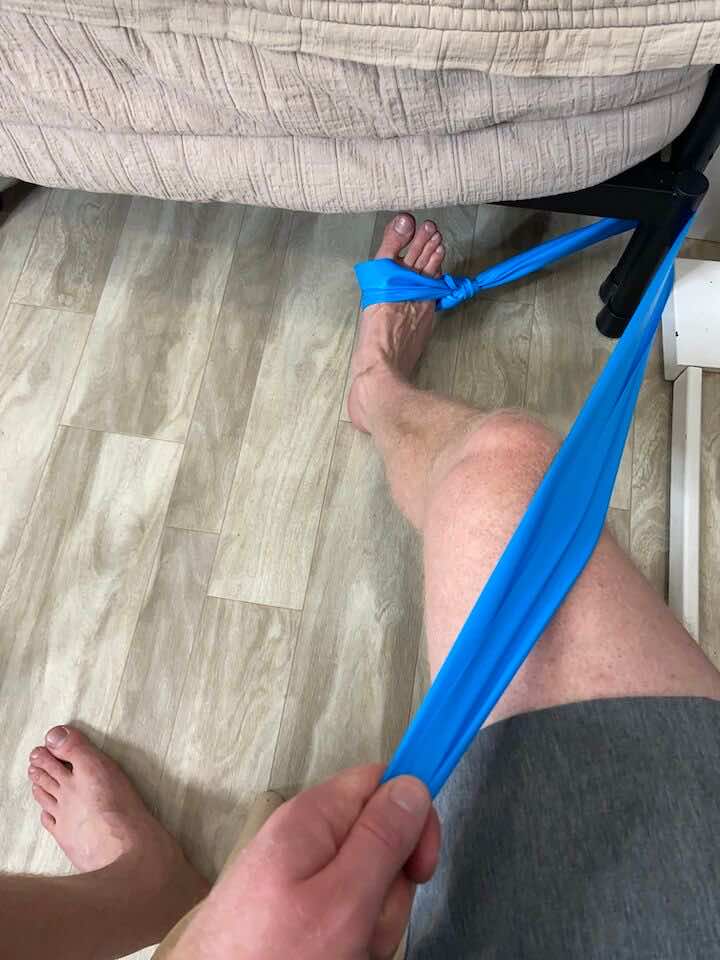
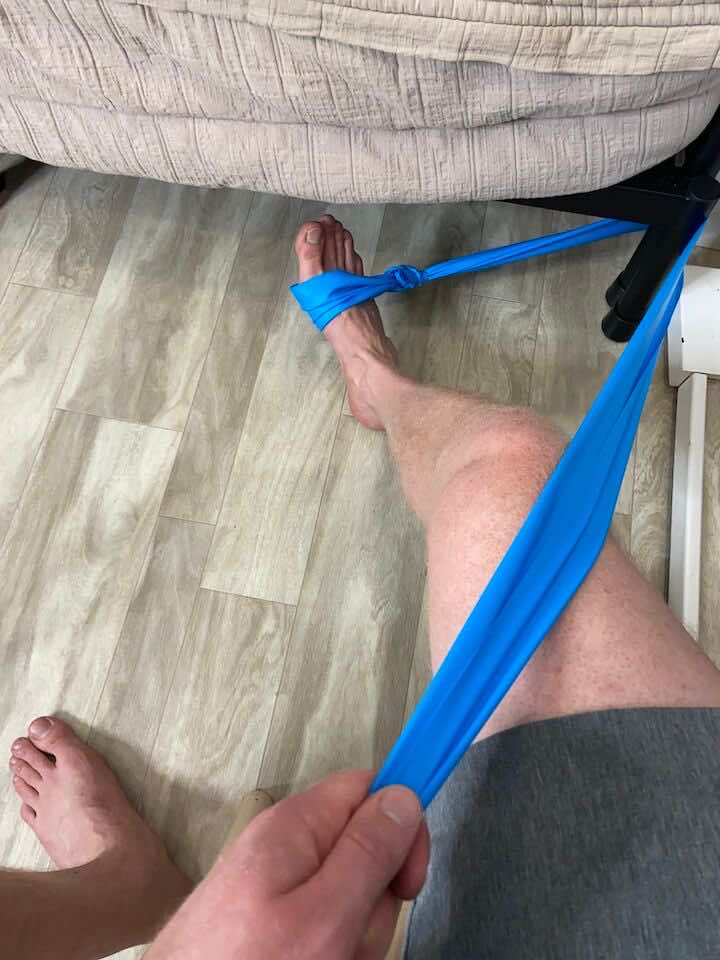
- Sit near a heavy table or sturdy chair that won’t move easily.
- Bring your foot in like you’re angling your ankle toward your other foot, squeeze in, then relax. Loop the resistance band over your foot and around the table or chair leg, as shown in the graphic above.
- Repeat this movement for 10 reps, and do a total of 3 sets.
Tip: Work on just moving your ankle and not your entire leg when performing this exercise! See if your knee rolls out at all, try to keep it still.
5. Ankle Dorsiflexion with Resistance Band
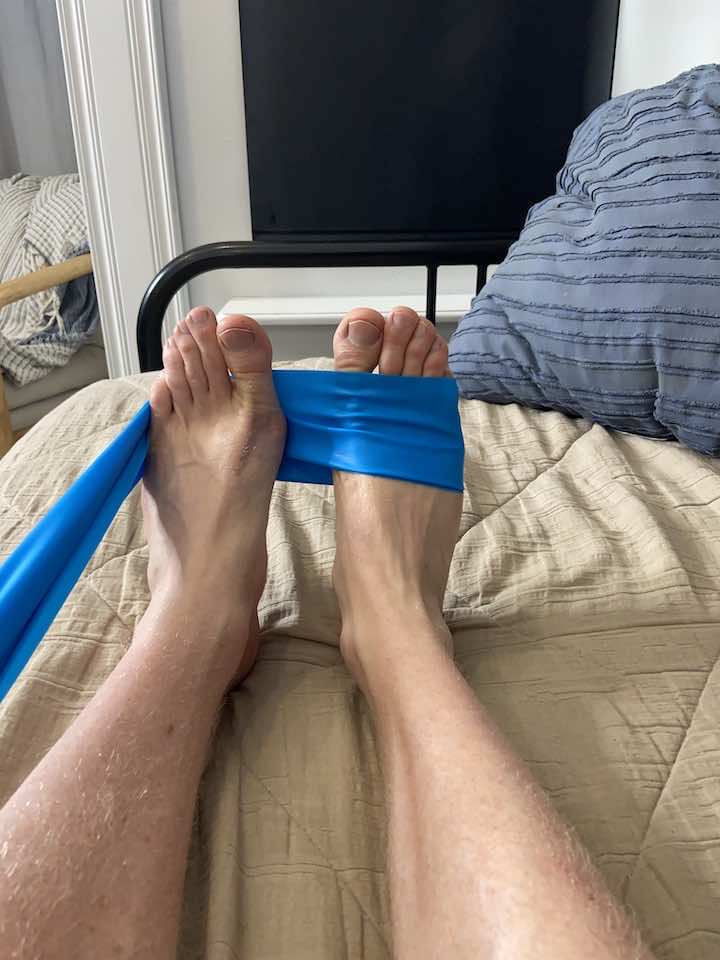
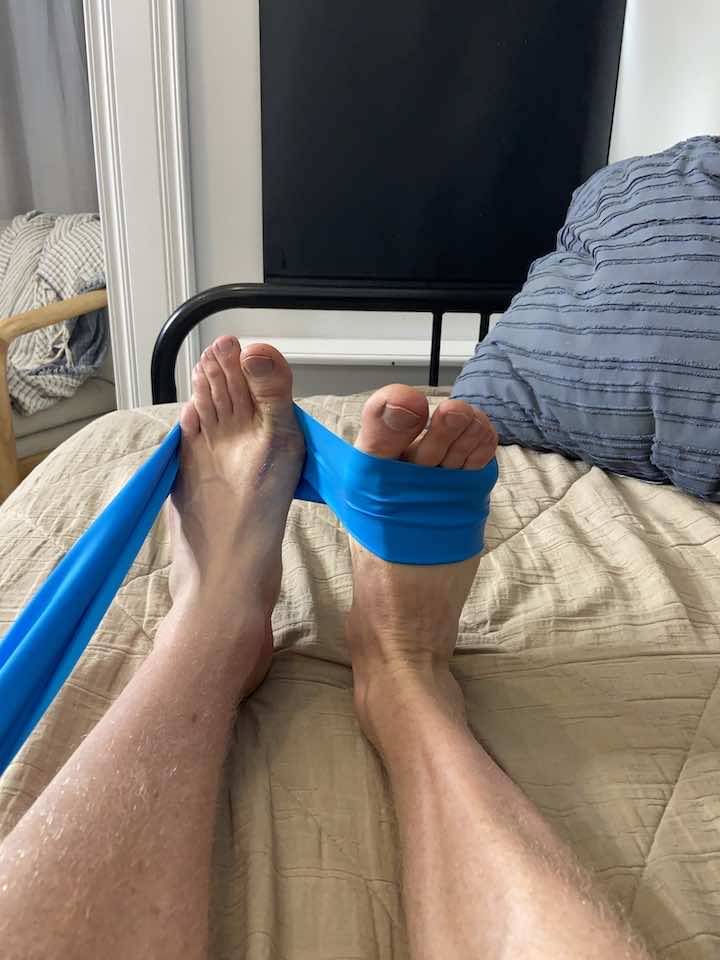
- Lay down on your bed with your ankle off the end.
- Loop the band around your right foot and loop the band around your left foot.
- Point your left foot and hold that position.
- Draw your right foot up like you’re trying to bring your toes to your nose, then relax. Finish the set, then repeat with your left foot.
- Repeat 10 repetitions for 3 sets.
6. Ankle Plantar Flexion with a Resistance Band
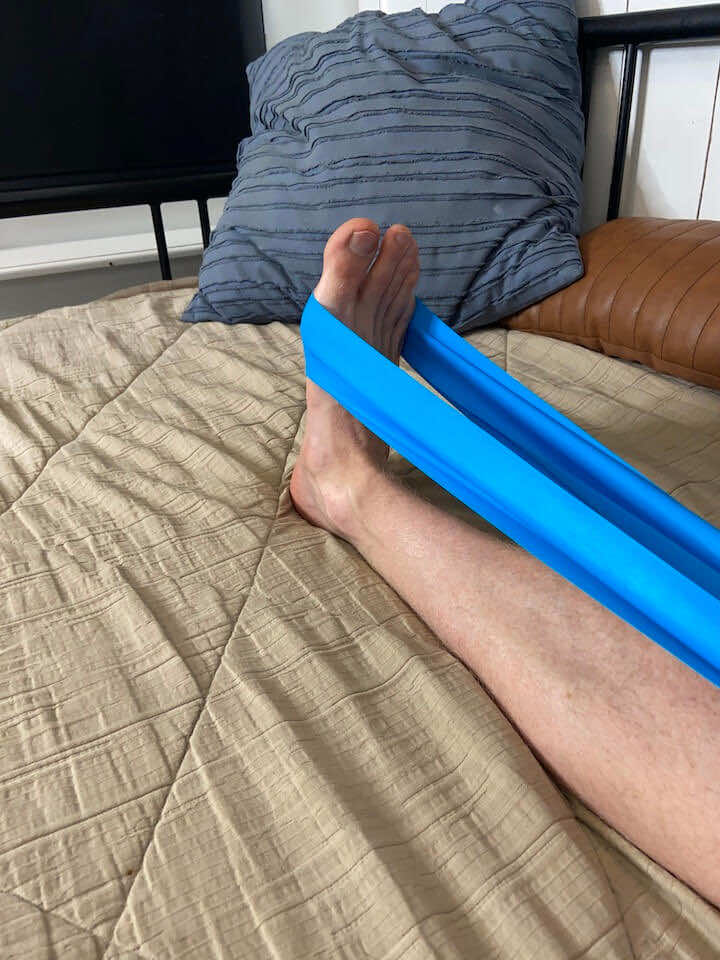
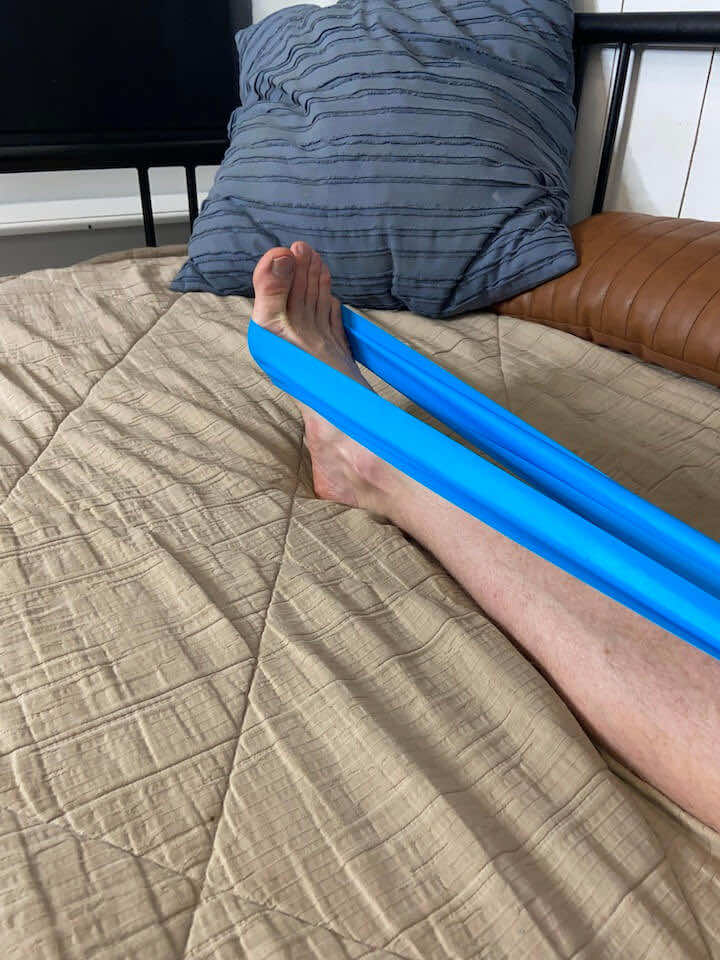
- Lay down on your bed with your ankle off the end.
- Loop the band around your right foot and hold onto the other end of the band with your hands.
- Point your toes and squeeze the back of your calf muscles, then relax. Finish the set, then repeat with your left foot.
- Repeat 10 repetitions for 3 sets.
7. Single Leg Balance

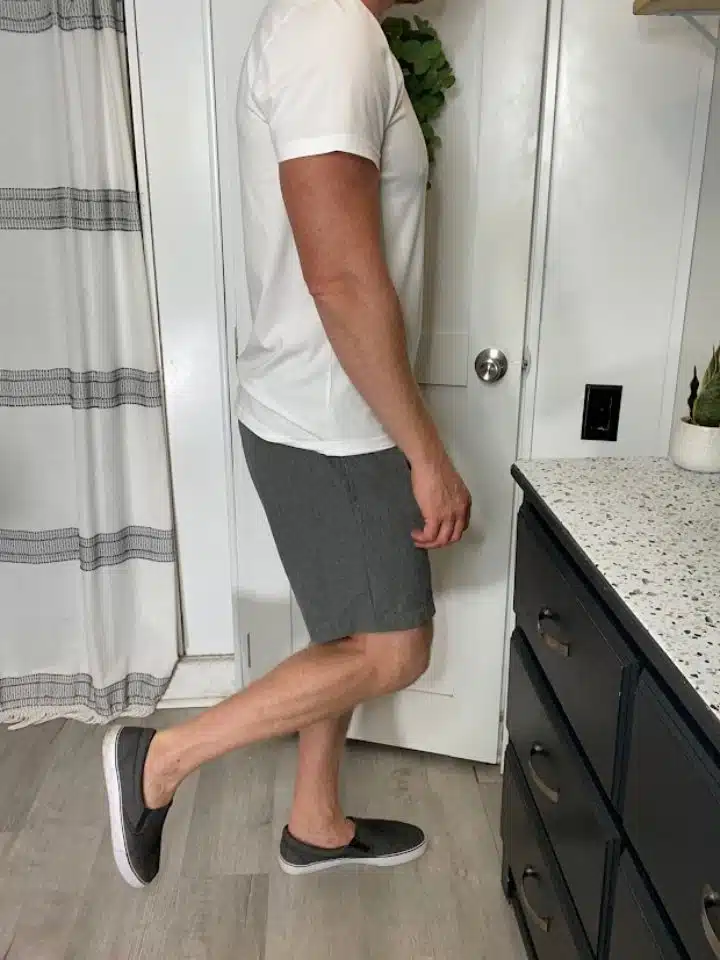
- Starting position: Standing in front of a sturdy surface, such as your countertop.
- Shift all of your weight onto the injured leg (avoid locking into the knee joint), picking the opposite foot up off the floor.
- Practice balancing for 30 seconds (you can use the counter for balance assist as needed).
- Return to your starting position to take a break.
- Repeat 2 more times on both sides.
Additional Care Tips for Charcot Foot
Effective management of Charcot foot involves more than just exercises. It’s crucial to incorporate these additional care practices:
- Supportive Footwear: Select shoes with good support and cushioning.
- Regular Check-ups: Frequent visits to a healthcare provider for foot monitoring.
- Control Blood Sugar Levels: Especially important for diabetic patients.
- Weight Management: Maintaining a healthy weight to reduce foot strain.
- Avoiding Foot Trauma: Being cautious to prevent foot injuries.
Conclusion
Managing Charcot foot requires a careful and consistent approach. Incorporating gentle strengthening and stretching exercises into your daily routine can significantly enhance foot and ankle health. It’s important to combine these exercises with other care practices, including wearing appropriate footwear and regularly monitoring your foot health, especially for those with diabetes.
By paying attention to these aspects, individuals with Charcot foot can maintain greater mobility and independence, reducing the risk of complications associated with this condition. Start incorporating these practices into your life today for healthier feet tomorrow.










